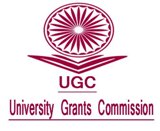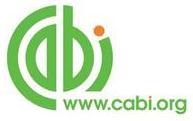Women Journalists Working Conditions and Their Suitability in the Media
Abstract
Going through the historical accounts of the press in India, though the women entered the journalistic profession in the late nineteenth and early twentieth century, they did not played an important role in designing and reshaping it. Today there are several women editors, columnists and television anchors. In the last decade, more women have entered the profession, and many have equal access to all beats, blurring the ‘traditional male area’ line considerably. In this context, a study was conducted to know the working conditions and their suitability in the media. The study was conducted in Chennai. A Sample of 60 respondents was selected randomly by using purposive random samplingtechnique. The sample frame for the study includes both male and female journalists of print and electronic media. The respondents comprised of editors, sub- editors, reporters, programme executives and free lancers in both print and electronic media. The data was obtained using the questionnaire and it was analyzed using percentage analysis method. The findings reveals that women journalists are encouraged and given freedom to organize their work and do not face major discrimination in their working spot on the basis of gender and they are also given decision – making position in the media and their positions in the media is satisfactory. Regarding, importance given for women issues in the media, both men and women journalist consider women issues as one of the important issue and women issues are portrayed adequately in the media.References
Akhileshwari.1990. Should Women Opt for Journalism? :Vidura, Press Institute of India.
Rajashri Dasgupta. Butterflies No More: Status of Women Journalists in India- Press Institute
of India:29
Surekha Sule. Work Conditions - As Bad As For Men: Status of Women Journalists in India, Press Institute of India:98
https://www.lycos.com
Downloads
How to Cite
Sasikala, R. (2016). Women Journalists Working Conditions and Their Suitability in the Media. Journal of Extension Education, 27(3). Retrieved from https://extensioneducation.org/index.php/jee/article/view/50
Issue
Section
Research Article
License
Authors who publish with JEE agree to the following terms:
- Authors retain copyright and grant JEE right of first publication with the work simultaneously licensed under a Creative Commons Attribution License that allows others to share the work with an acknowledgement of the work's authorship and initial publication in this journal.
- Authors are able to enter into separate, additional contractual arrangements for the non-exclusive distribution of the journal's published version of the work (e.g., post it to an institutional repository or publish it in a book), with an acknowledgement of its initial publication in this journal.
- Authors are permitted and encouraged to post their work online (e.g., in institutional repositories or on their website) prior to and during the submission process, as it can lead to productive exchanges, as well as earlier and greater citation of published work (See The Effect of Open Access).
Extension Education Society
https://creativecommons.org/licenses/by-nc-sa/4.0/
This work is licensed under a Creative Commons Attribution-NonCommercial-ShareAlike 4.0 International License.









.png)

